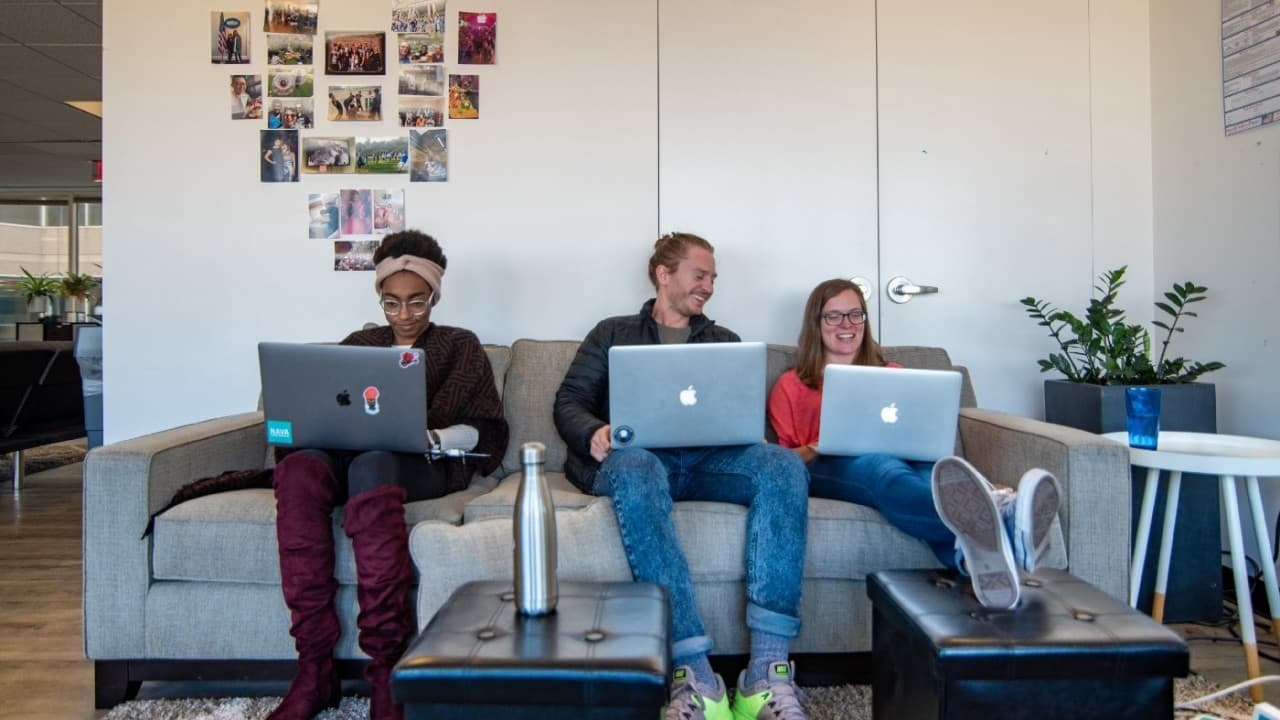It’s hard to describe what a typical day at Nava is like because no two days are ever the same. Every day brings new projects, challenges, and opportunities. So we’re sharing just a glimpse of what work is actually like for different people at Nava. Here’s what Alsia Plybeah, Software Engineer has been up to lately.

Alsia Plybeah, software engineer at Nava, working in the Washington, D.C. office pre-pandemic.
Photo by Eric Chiu
On expectations versus reality
My “every day” at Nava is completely different than what I expected when I first started here. In the project I’m currently working on — supporting Paid Family Medical Leave in Massachusetts — I was surprised to find out how closely I’d work with government stakeholders. I actually get to see legislation come to life and help build the systems that support it.
I previously thought I’d be working heads down with other engineers. But our work is a lot more than that. There’s a lot of collaboration (which I love), writing, research, and helping people who aren’t technical understand what we’re building. I’m using skills from previous work that I didn’t expect to bring out here.
On the Engineering Apprenticeship Program
As an apprentice, I got to take on real work — not busy work — as a junior engineer. It was first and foremost a learning opportunity, which was extremely helpful because this was my first job in tech. I basically had a person dedicated to helping me navigate the world of government contracting and day-to-day as an engineer. After meetings, for example, we’d have a debriefing session where I could ask questions and get the proper context around policies and decisions.
And it was fun. I got to play around with things like state management with Redux, custom tools like Sniffybara (a Rails tool, based on Capybara, that checks for accessibility in code), Flask and seeing the differences between that and Django (both for Python), and documentation like Storybook, which lets you build interactive documentation for your app.
On changing career paths
Before I got into engineering, I worked at a library and volunteered at polling stations and in grassroots community organizing. I hadn’t worked in tech before but I recognized and understood the need for civic tech.
When I first applied for the apprenticeship, I was focused on front-end engineering and more specifically, accessibility. But I’ve since shifted into back-end engineering and infrastructure. The project I was first assigned to had a blend of responsibilities, which let me try out other things. And there are other opportunities to learn, at things like off site workshops like Design for Engineers.
I wouldn’t have said I was really into back-end work without the chance to really dive into it. People on my team were actively supportive of this transition. Pairing and screen sharing to learn new skills is pretty common. People are willing to work with you or get on a call to answer questions.


